My
List |
Addition Date
|
Target
|
Mission
|
Instrument
|
Size
|

|
1999-03-13 |
Jupiter
|
Voyager
|
VG ISS - Narrow Angle
|
937x910x3 |

|
-
PIA01521:
-
Jupiter White Oval
Full Resolution:
TIFF
(1.655 MB)
JPEG
(72.53 kB)
|

|
1999-03-13 |
Jupiter
|
Voyager
|
VG ISS - Narrow Angle
|
487x559x3 |

|
-
PIA01519:
-
Disturbed Region West of the Great Red Spot
Full Resolution:
TIFF
(403.2 kB)
JPEG
(17.82 kB)
|

|
1999-03-13 |
Jupiter
|
Voyager
|
VG ISS - Narrow Angle
|
581x915x3 |

|
-
PIA01518:
-
Jupiter Plume
Full Resolution:
TIFF
(1.083 MB)
JPEG
(42.3 kB)
|

|
1999-03-13 |
Jupiter
|
Voyager
|
VG ISS - Narrow Angle
|
919x837x3 |

|
-
PIA01513:
-
Jupiter - Southeast of Great Red Spot
Full Resolution:
TIFF
(1.426 MB)
JPEG
(79.63 kB)
|

|
1999-03-13 |
Jupiter
|
Voyager
|
VG ISS - Narrow Angle
|
865x692x3 |

|
-
PIA01512:
-
Jupiter's Great Red Spot and White Ovals
Full Resolution:
TIFF
(1.188 MB)
JPEG
(68.23 kB)
|

|
1999-03-13 |
Jupiter
|
Voyager
|
VG ISS - Narrow Angle
|
400x400x3 |

|
-
PIA01509:
-
Jupiter Full Disk with Great Red Spot
Full Resolution:
TIFF
(274.6 kB)
JPEG
(11.19 kB)
|

|
1999-03-06 |
Jupiter
|
Voyager
|
VG ISS - Narrow Angle
|
915x894x3 |

|
-
PIA00360:
-
High Winds in the Jovian Mid-latitudes
Full Resolution:
TIFF
(1.887 MB)
JPEG
(76.32 kB)
|

|
1999-03-06 |
Jupiter
|
Voyager
|
VG ISS - Narrow Angle
|
916x783x3 |

|
-
PIA00359:
-
Jupiter Great Red Spot and White Ovals
Full Resolution:
TIFF
(1.78 MB)
JPEG
(66.58 kB)
|

|
1999-03-06 |
Jupiter
|
Voyager
|
VG ISS - Narrow Angle
|
1000x1000x3 |

|
-
PIA00358:
-
Jupiter and Three Galilean Satellites
Full Resolution:
TIFF
(1.514 MB)
JPEG
(50.61 kB)
|

|
1999-01-08 |
Jupiter
|
Voyager
|
VG ISS - Narrow Angle
|
400x400x3 |

|
-
PIA01353:
-
Jupiter
Full Resolution:
TIFF
(185.9 kB)
JPEG
(9.675 kB)
|

|
1998-12-07 |
Jupiter
|
Galileo
|
Photopolarimeter-Radiometer
|
1500x2571x3 |

|
-
PIA01496:
-
Jovian Dark Spot
Full Resolution:
TIFF
(2.798 MB)
JPEG
(143.5 kB)
|

|
1998-12-07 |
Jupiter
|
Galileo
|
Solid-State Imaging
|
900x900x3 |

|
-
PIA01650:
-
Historic Merger of Storms on Jupiter
Full Resolution:
TIFF
(1.153 MB)
JPEG
(75.13 kB)
|

|
1998-12-05 |
Jupiter
|
Voyager
|
VG ISS - Narrow Angle
|
5489x4637x3 |

|
-
PIA01384:
-
Jupiter's Great Red Spot
Full Resolution:
TIFF
(76.36 MB)
JPEG
(3.275 MB)
|

|
1998-12-05 |
Jupiter
|
Voyager
|
VG ISS - Narrow Angle
|
916x901x3 |

|
-
PIA01369:
-
Jupiter from Voyager 2
Full Resolution:
TIFF
(1.809 MB)
JPEG
(68.65 kB)
|

|
1998-12-05 |
Jupiter
|
Voyager
|
VG ISS - Narrow Angle
|
800x920x3 |

|
-
PIA01370:
-
Jupiter's Great Red Spot
Full Resolution:
TIFF
(1.251 MB)
JPEG
(49.61 kB)
|

|
1998-11-04 |
Jupiter
|
Voyager
|
VG ISS - Narrow Angle
|
400x400x3 |

|
-
PIA01371:
-
Voyager Picture of Jupiter
Full Resolution:
TIFF
(152.4 kB)
JPEG
(8.968 kB)
|

|
1998-10-30 |
Jupiter
|
Voyager
|
|
2081x1654x3 |

|
-
PIA01481:
-
Jupiter System Montage
Full Resolution:
TIFF
(4.652 MB)
JPEG
(148.9 kB)
|

|
1998-10-14 |
Jupiter
|
Galileo
Hubble Space Telescope
|
|
850x950x3 |

|
-
PIA01477:
-
Jupiter's White Ovals
Full Resolution:
TIFF
(648.3 kB)
JPEG
(32.09 kB)
|

|
1998-10-13 |
Jupiter
|
Galileo
|
Solid-State Imaging
|
592x537x3 |
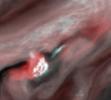
|
-
PIA01639:
-
Water Cloud Thunderstorm Northwest of Great Red Spot
Full Resolution:
TIFF
(621.9 kB)
JPEG
(19.42 kB)
|

|
1998-10-13 |
Jupiter
|
Galileo
|
Solid-State Imaging
|
1152x855x1 |

|
-
PIA01638:
-
Jovian Lightning and the Daytime Storm
Full Resolution:
TIFF
(188.1 kB)
JPEG
(89.44 kB)
|

|
1998-10-13 |
Jupiter
|
Galileo
|
Solid-State Imaging
|
880x620x3 |

|
-
PIA01636:
-
Changing Lightning Storms on Jupiter
Full Resolution:
TIFF
(84.96 kB)
JPEG
(37.34 kB)
|

|
1998-09-21 |
Jupiter
|
Voyager
|
ISS - Narrow Angle
|
600x992x3 |

|
-
PIA01324:
-
Jupiter
Full Resolution:
TIFF
(299.6 kB)
JPEG
(21.53 kB)
|

|
1998-07-02 |
Io
|
Galileo
|
Solid-State Imaging
|
581x900x3 |

|
-
PIA01604:
-
Close-up color view of Io
Full Resolution:
TIFF
(1.769 MB)
JPEG
(78.57 kB)
|

|
1998-06-10 |
Jupiter
|
Galileo
|
Solid-State Imaging
|
900x900x3 |

|
-
PIA01603:
-
Time Series of Jupiter's Aurora
Full Resolution:
TIFF
(820.7 kB)
JPEG
(73.32 kB)
|

|
1998-06-10 |
Jupiter
|
Galileo
|
Solid-State Imaging
|
900x950x3 |

|
-
PIA01602:
-
Time Series of Jupiter's Aurora
Full Resolution:
TIFF
(1.121 MB)
JPEG
(91.86 kB)
|

|
1998-06-10 |
Jupiter
|
Galileo
|
Solid-State Imaging
|
900x950x3 |

|
-
PIA01601:
-
Time Series of Jupiter's Aurora
Full Resolution:
TIFF
(976.6 kB)
JPEG
(83.63 kB)
|

|
1998-06-10 |
Jupiter
|
Galileo
|
Solid-State Imaging
|
900x900x3 |
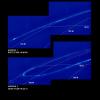
|
-
PIA01600:
-
Time Series of Jupiter's Aurora
Full Resolution:
TIFF
(773.5 kB)
JPEG
(61.78 kB)
|

|
1998-06-04 |
Jupiter
|
Voyager
|
|
840x840x3 |

|
-
PIA00343:
-
Jupiter
Full Resolution:
TIFF
(1.194 MB)
JPEG
(42 kB)
|

|
1998-05-02 |
Jupiter
|
Hubble Space Telescope
|
WFPC2
|
800x600x3 |

|
-
PIA01267:
-
Hubble Space Telescope Resolves Volcanoes on Io
Full Resolution:
TIFF
(357 kB)
JPEG
(40.59 kB)
|

|
1998-05-02 |
Jupiter
|
Hubble Space Telescope
|
WFPC2
|
600x854x1 |

|
-
PIA01266:
-
Jupiter's Upper Atmospheric Winds Revealed in Ultraviolet Images by Hubble Telescope
Full Resolution:
TIFF
(239.6 kB)
JPEG
(62.37 kB)
|

|
1998-05-02 |
Jupiter
|
Hubble Space Telescope
|
WFPC2
|
800x600x1 |

|
-
PIA01265:
-
Month-long Evolution of the D/G Jupiter Impact Sites from Comet P/Shoemaker-Levy 9
Full Resolution:
TIFF
(226.8 kB)
JPEG
(54.55 kB)
|

|
1998-05-02 |
Jupiter
|
Hubble Space Telescope
|
WFPC2
|
830x568x3 |

|
-
PIA01264:
-
Evolution of the P/Shoemaker-Levy 9 "Gang of Four" Region
Full Resolution:
TIFF
(543.5 kB)
JPEG
(69.45 kB)
|

|
1998-05-02 |
Jupiter
|
Hubble Space Telescope
|
WFPC2
|
750x700x3 |

|
-
PIA01263:
-
Jupiter G Impact Evolution
Full Resolution:
TIFF
(752.8 kB)
JPEG
(31.92 kB)
|

|
1998-05-02 |
Jupiter
|
Hubble Space Telescope
|
WFPC2
|
800x800x3 |

|
-
PIA01262:
-
Hubble Tracks Jupiter Storms
Full Resolution:
TIFF
(1.085 MB)
JPEG
(40.51 kB)
|

|
1998-05-02 |
Jupiter
|
Hubble Space Telescope
|
WFPC2
|
600x700x3 |

|
-
PIA01261:
-
Hubble Gallery of Jupiter's Galilean Satellites
Full Resolution:
TIFF
(527.3 kB)
JPEG
(44.81 kB)
|

|
1998-05-02 |
Jupiter
|
Hubble Space Telescope
|
WFPC2
|
800x600x3 |

|
-
PIA01260:
-
Hubble Discovers Bright New Spot on Io
Full Resolution:
TIFF
(604.4 kB)
JPEG
(33.67 kB)
|

|
1998-05-02 |
Jupiter
|
Hubble Space Telescope
|
WFPC2
|
850x490x3 |

|
-
PIA01259:
-
Hubble Views the Galileo Probe Entry Site on Jupiter
Full Resolution:
TIFF
(993.4 kB)
JPEG
(64.05 kB)
|

|
1998-05-02 |
Jupiter
|
Hubble Space Telescope
|
WFPC2
|
720x600x1 |

|
-
PIA01258:
-
Rare Hubble Portrait of Io and Jupiter
Full Resolution:
TIFF
(305.8 kB)
JPEG
(28.52 kB)
|

|
1998-05-02 |
Jupiter
|
Hubble Space Telescope
|
WFPC2
|
2069x2489x3 |

|
-
PIA01257:
-
Hubble Images Reveal Jupiter's Auroras
Full Resolution:
TIFF
(6.679 MB)
JPEG
(483.2 kB)
|

|
1998-05-02 |
Jupiter
|
Hubble Space Telescope
|
WFPC2
|
720x900x3 |

|
-
PIA01256:
-
Hubble Captures Volcanic Eruption Plume From Io
Full Resolution:
TIFF
(1.097 MB)
JPEG
(65.49 kB)
|

|
1998-05-02 |
Jupiter
|
Hubble Space Telescope
|
WFPC2
|
1152x860x3 |

|
-
PIA01255:
-
Hubble Provides Infrared View of Jupiter's Moon, Ring, and Clouds
Full Resolution:
TIFF
(645.9 kB)
JPEG
(67.7 kB)
|

|
1998-05-02 |
Jupiter
|
Hubble Space Telescope
|
WFPC2
|
795x900x3 |

|
-
PIA01254:
-
Hubble Provides Complete View of Jupiter's Auroras
Full Resolution:
TIFF
(1.387 MB)
JPEG
(114 kB)
|

|
1998-04-02 |
Jupiter
|
Galileo
|
Photopolarimeter-Radiometer
|
429x585x3 |

|
-
PIA01234:
-
PPR Great Red Spot Temperature Map
Full Resolution:
TIFF
(65.49 kB)
JPEG
(30.68 kB)
|

|
1998-04-02 |
Jupiter
|
Galileo
|
Photopolarimeter-Radiometer
|
468x604x3 |

|
-
PIA01233:
-
Photopolarimeter/Radiometer (PPR) Temperature Map of Great Red Spot
Full Resolution:
TIFF
(340.9 kB)
JPEG
(32.65 kB)
|

|
1998-03-26 |
Jupiter
|
Galileo
|
Solid-State Imaging
|
1200x700x1 |

|
-
PIA00831:
-
Mosaic of Jupiter's Great Red Spot (Violet Filter)
Full Resolution:
TIFF
(321.7 kB)
JPEG
(53.04 kB)
|

|
1998-03-26 |
Jupiter
|
Galileo
|
Solid-State Imaging
|
1000x1200x1 |

|
-
PIA01229:
-
Jupiter's Southern Hemisphere in the Near-Infrared (Time Set 3)
Full Resolution:
TIFF
(648.6 kB)
JPEG
(109.9 kB)
|

|
1998-03-26 |
Jupiter
|
Galileo
|
Solid-State Imaging
|
1000x1200x1 |

|
-
PIA01228:
-
Jupiter's Southern Hemisphere in the Near-Infrared (Time Set 2)
Full Resolution:
TIFF
(721.3 kB)
JPEG
(128.5 kB)
|

|
1998-03-26 |
Jupiter
|
Galileo
|
Solid-State Imaging
|
1200x1600x1 |

|
-
PIA01227:
-
Jupiter's Southern Hemisphere in the Near-Infrared (Time Set 1)
Full Resolution:
TIFF
(903.4 kB)
JPEG
(147.8 kB)
|

|
1998-03-26 |
Jupiter
|
Galileo
|
Near Infrared Mapping Spectrometer
|
712x725x3 |

|
-
PIA01224:
-
NIMS Observes the Structure and Composition of Jupiter's Clouds
Full Resolution:
TIFF
(33.81 kB)
JPEG
(75.03 kB)
|

|
1998-03-26 |
Jupiter
|
Galileo
|
Solid-State Imaging
|
900x1600x3 |

|
-
PIA00897:
-
Jupiter's Northern Hemisphere in False Color (Time Set 3)
Full Resolution:
TIFF
(1.178 MB)
JPEG
(55.91 kB)
|

|
1998-03-26 |
Jupiter
|
Galileo
|
Solid-State Imaging
|
900x1600x3 |

|
-
PIA00896:
-
Jupiter's Northern Hemisphere in True Color (Time Set 3)
Full Resolution:
TIFF
(975.8 kB)
JPEG
(50.84 kB)
|

|
1998-03-26 |
Jupiter
|
Galileo
|
Solid-State Imaging
|
1200x1500x3 |

|
-
PIA00895:
-
Jupiter's Northern Hemisphere in False Color (Time Set 2)
Full Resolution:
TIFF
(3.156 MB)
JPEG
(134.4 kB)
|

|
1998-03-26 |
Jupiter
|
Galileo
|
Solid-State Imaging
|
1200x1500x3 |

|
-
PIA00894:
-
Jupiter's Northern Hemisphere in True Color (Time Set 2)
Full Resolution:
TIFF
(2.027 MB)
JPEG
(84.82 kB)
|

|
1998-03-26 |
Jupiter
|
Galileo
|
Solid-State Imaging
|
900x1500x3 |

|
-
PIA00893:
-
Jupiter's Northern Hemisphere in False Color (Time Set 1)
Full Resolution:
TIFF
(2.966 MB)
JPEG
(123.3 kB)
|

|
1998-03-26 |
Jupiter
|
Galileo
|
Solid-State Imaging
|
900x1500x3 |

|
-
PIA00892:
-
Jupiter's Northern Hemisphere in True Color (Time Set 1)
Full Resolution:
TIFF
(1.889 MB)
JPEG
(71.61 kB)
|

|
1998-03-26 |
Jupiter
|
Galileo
|
Solid-State Imaging
|
900x1600x1 |

|
-
PIA00890:
-
Jupiter's Northern Hemisphere in Violet Light (Time Set 3)
Full Resolution:
TIFF
(225 kB)
JPEG
(45.94 kB)
|

|
1998-03-26 |
Jupiter
|
Galileo
|
Solid-State Imaging
|
900x1600x1 |

|
-
PIA00889:
-
Jupiter's Northern Hemisphere in a Methane Band (Time Set 3)
Full Resolution:
TIFF
(325 kB)
JPEG
(47.42 kB)
|

|
1998-03-26 |
Jupiter
|
Galileo
|
Solid-State Imaging
|
900x1600x1 |

|
-
PIA00888:
-
Jupiter's Northern Hemisphere in a Methane Band (Time Set 3)
Full Resolution:
TIFF
(323.8 kB)
JPEG
(44.62 kB)
|

|
1998-03-26 |
Jupiter
|
Galileo
|
Solid-State Imaging
|
900x1600x1 |

|
-
PIA00887:
-
Jupiter's Northern Hemisphere in the Near-Infrared (Time Set 3)
Full Resolution:
TIFF
(350.8 kB)
JPEG
(54.2 kB)
|

|
1998-03-26 |
Jupiter
|
Galileo
|
Solid-State Imaging
|
1200x1500x1 |

|
-
PIA00886:
-
Jupiter's Northern Hemisphere in Violet Light (Time Set 2)
Full Resolution:
TIFF
(452.3 kB)
JPEG
(86.06 kB)
|

|
1998-03-26 |
Jupiter
|
Galileo
|
Solid-State Imaging
|
1200x1500x1 |

|
-
PIA00885:
-
Jupiter's Northern Hemisphere in a Methane Band (Time Set 2)
Full Resolution:
TIFF
(851.4 kB)
JPEG
(138.4 kB)
|

|
1998-03-26 |
Jupiter
|
Galileo
|
Solid-State Imaging
|
1200x1500x1 |

|
-
PIA00884:
-
Jupiter's Northern Hemisphere in a Methane Band (Time Set 2)
Full Resolution:
TIFF
(844 kB)
JPEG
(119.9 kB)
|

|
1998-03-26 |
Jupiter
|
Galileo
|
Solid-State Imaging
|
1200x1500x1 |

|
-
PIA00883:
-
Jupiter's Northern Hemisphere in the Near-Infrared (Time Set 2)
Full Resolution:
TIFF
(853.9 kB)
JPEG
(127.7 kB)
|

|
1998-03-26 |
Jupiter
|
Galileo
|
Solid-State Imaging
|
900x1500x1 |

|
-
PIA00882:
-
Jupiter's Northern Hemisphere in Violet Light (Time Set 1)
Full Resolution:
TIFF
(433.5 kB)
JPEG
(44.84 kB)
|

|
1998-03-26 |
Jupiter
|
Galileo
|
Solid-State Imaging
|
900x1500x1 |

|
-
PIA00881:
-
Jupiter's Northern Hemisphere in a Methane Band (Time Set 1)
Full Resolution:
TIFF
(891.8 kB)
JPEG
(155.3 kB)
|

|
1998-03-26 |
Jupiter
|
Galileo
|
Solid-State Imaging
|
900x1500x1 |

|
-
PIA00880:
-
Jupiter's Northern Hemisphere in a Methane Band (Time Set 1)
Full Resolution:
TIFF
(791.2 kB)
JPEG
(117 kB)
|

|
1998-03-26 |
Jupiter
|
Galileo
|
Solid-State Imaging
|
900x1500x1 |

|
-
PIA00879:
-
Jupiter's Northern Hemisphere in the Near-Infrared (Time Set 1)
Full Resolution:
TIFF
(771.1 kB)
JPEG
(112.9 kB)
|

|
1998-03-26 |
Jupiter
|
Galileo
|
Solid-State Imaging
|
903x787x3 |
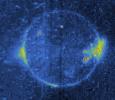
|
-
PIA00704:
-
Io Eclipse/Volcanic Eruption
Full Resolution:
TIFF
(574.4 kB)
JPEG
(71.49 kB)
|

|
1998-03-26 |
Jupiter
|
Galileo
|
Solid-State Imaging
|
1700x1700x3 |

|
-
PIA00700:
-
Jupiter's White Ovals/True and False Color
Full Resolution:
TIFF
(4.658 MB)
JPEG
(183.5 kB)
|

|
1998-03-26 |
Jupiter
|
Galileo
|
Solid-State Imaging
|
1275x800x1 |

|
-
PIA00873:
-
Jupiter's Long-lived White Ovals in a Methane Band (Time Set 2)
Full Resolution:
TIFF
(707.9 kB)
JPEG
(124.8 kB)
|

|
1998-03-26 |
Jupiter
|
Galileo
|
Solid-State Imaging
|
1275x800x1 |

|
-
PIA00872:
-
Jupiter's Long-lived White Ovals in a Methane Band (Time Set 2)
Full Resolution:
TIFF
(638.8 kB)
JPEG
(92.7 kB)
|

|
1998-03-26 |
Jupiter
|
Galileo
|
Solid-State Imaging
|
1275x800x1 |

|
-
PIA00871:
-
Jupiter's Long-lived White Ovals in the Near-Infrared (Time Set 2)
Full Resolution:
TIFF
(597.6 kB)
JPEG
(87.23 kB)
|

|
1998-03-26 |
Jupiter
|
Galileo
|
Solid-State Imaging
|
1275x800x1 |

|
-
PIA00870:
-
Jupiter's Long-lived White Ovals in Violet Light (Time Set 2)
Full Resolution:
TIFF
(395.8 kB)
JPEG
(65.02 kB)
|

|
1998-03-26 |
Jupiter
|
Galileo
|
Solid-State Imaging
|
1400x800x1 |

|
-
PIA00869:
-
Jupiter's Long-lived White Ovals in the Near-Infrared (Time Set 4)
Full Resolution:
TIFF
(420.8 kB)
JPEG
(67.45 kB)
|

|
1998-03-26 |
Jupiter
|
Galileo
|
Solid-State Imaging
|
1400x800x1 |

|
-
PIA00868:
-
Jupiter's Long-lived White Ovals in Violet Light (Time Set 4)
Full Resolution:
TIFF
(272.1 kB)
JPEG
(42.38 kB)
|

|
1998-03-26 |
Jupiter
|
Galileo
|
Solid-State Imaging
|
1700x800x1 |

|
-
PIA00867:
-
Jupiter's Long-lived White Ovals in the Near-Infrared (Time Set 3)
Full Resolution:
TIFF
(692.9 kB)
JPEG
(101.3 kB)
|

|
1998-03-26 |
Jupiter
|
Galileo
|
Solid-State Imaging
|
1700x800x1 |

|
-
PIA00866:
-
Jupiter's Long-lived White Ovals in Violet Light (Time Set 3)
Full Resolution:
TIFF
(453.6 kB)
JPEG
(61.34 kB)
|

|
1998-03-26 |
Jupiter
|
Galileo
|
Solid-State Imaging
|
1400x800x1 |

|
-
PIA00865:
-
Jupiter's Long-lived White Ovals in a Methane (Time Set 4)
Full Resolution:
TIFF
(383.5 kB)
JPEG
(60.58 kB)
|

|
1998-03-26 |
Jupiter
|
Galileo
|
Solid-State Imaging
|
1400x800x1 |

|
-
PIA00864:
-
Jupiter's Long-lived White Ovals in a Methane (Time Set 4)
Full Resolution:
TIFF
(398.5 kB)
JPEG
(55.3 kB)
|

|
1998-03-26 |
Jupiter
|
Galileo
|
Solid-State Imaging
|
1700x800x1 |

|
-
PIA00863:
-
Jupiter's Long-lived White Ovals in a Methane (Time Set 3)
Full Resolution:
TIFF
(652.5 kB)
JPEG
(93.73 kB)
|

|
1998-03-26 |
Jupiter
|
Galileo
|
Solid-State Imaging
|
1700x800x1 |
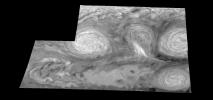
|
-
PIA00862:
-
Jupiter's Long-lived White Ovals in a Methane (Time Set 3)
Full Resolution:
TIFF
(687.6 kB)
JPEG
(98.21 kB)
|

|
1998-03-26 |
Jupiter
|
Galileo
|
Solid-State Imaging
|
1900x1000x1 |

|
-
PIA00861:
-
Jupiter's Long-lived White Ovals in Near-Infrared (Time Set 1)
Full Resolution:
TIFF
(1.036 MB)
JPEG
(141.6 kB)
|

|
1998-03-26 |
Jupiter
|
Galileo
|
Solid-State Imaging
|
1700x800x3 |
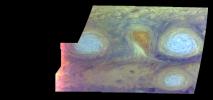
|
-
PIA00860:
-
Jupiter's Long-lived White Ovals in False Color (Time Set 2)
Full Resolution:
TIFF
(2.492 MB)
JPEG
(101.9 kB)
|

|
1998-03-26 |
Jupiter
|
Galileo
|
Solid-State Imaging
|
1700x800x3 |

|
-
PIA00859:
-
Jupiter's Long-lived White Ovals in True Color (Time Set 2)
Full Resolution:
TIFF
(1.943 MB)
JPEG
(63.89 kB)
|

|
1998-03-26 |
Jupiter
|
Galileo
|
Solid-State Imaging
|
1400x800x3 |

|
-
PIA00858:
-
Jupiter's Long-lived White Ovals in True Color (Time Set 4)
Full Resolution:
TIFF
(1.229 MB)
JPEG
(52.59 kB)
|

|
1998-03-26 |
Jupiter
|
Galileo
|
Solid-State Imaging
|
1400x800x3 |

|
-
PIA00857:
-
Jupiter's Long-lived White Ovals in False Color (Time Set 4)
Full Resolution:
TIFF
(1.522 MB)
JPEG
(67.93 kB)
|

|
1998-03-26 |
Jupiter
|
Galileo
|
Near Infrared Mapping Spectrometer
|
1000x800x3 |

|
-
PIA00847:
-
NIMS Observes Europa's Shadow
Full Resolution:
TIFF
(636.5 kB)
JPEG
(25.2 kB)
|

|
1998-03-26 |
Jupiter
|
Galileo
|
Near Infrared Mapping Spectrometer
|
1000x800x3 |

|
-
PIA00582:
-
Jupiter's Multi-level Clouds
Full Resolution:
TIFF
(415.2 kB)
JPEG
(39.65 kB)
|

|
1998-03-26 |
Jupiter
|
Galileo
|
Near Infrared Mapping Spectrometer
|
900x800x3 |

|
-
PIA00842:
-
Observations of Jupiter's thermal emission made by the Infrared Telescope Facility and the Galileo NIMS instrument
Full Resolution:
TIFF
(100.3 kB)
JPEG
(72.46 kB)
|

|
1998-03-26 |
Jupiter
|
Galileo
|
Near Infrared Mapping Spectrometer
|
1300x900x3 |

|
-
PIA00838:
-
First Near Infrared Mapping Spectrometer (NIMS) Image of the Great Red Spot
Full Resolution:
TIFF
(1.043 MB)
JPEG
(38.36 kB)
|

|
1998-03-26 |
Jupiter
|
Galileo
|
Solid-State Imaging
|
414x800x1 |
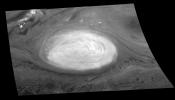
|
-
PIA00833:
-
Mosaic of Jupiter's Great Red Spot (Methane Filter)
Full Resolution:
TIFF
(409.5 kB)
JPEG
(76.8 kB)
|

|
1998-03-26 |
Jupiter
|
Galileo
|
Solid-State Imaging
|
4000x2500x1 |

|
-
PIA00832:
-
Mosaic of Jupiter's Great Red Spot (727 nm)
Full Resolution:
TIFF
(1.709 MB)
JPEG
(315.5 kB)
|

|
1998-03-26 |
Jupiter
|
Galileo
|
Solid-State Imaging
|
1400x900x1 |

|
-
PIA00830:
-
Mosaic of Jupiter's Great Red Spot (in the near infrared)
Full Resolution:
TIFF
(371.1 kB)
JPEG
(62.12 kB)
|

|
1998-03-26 |
Jupiter
|
Galileo
|
Solid-State Imaging
|
800x1100x1 |

|
-
PIA00891:
-
Jupiter's Northern Hemisphere in the Near-Infrared (Time Set 4)
Full Resolution:
TIFF
(471.1 kB)
JPEG
(70.8 kB)
|

|
1998-03-26 |
Jupiter
|
Galileo
|
Near Infrared Mapping Spectrometer
|
700x900x1 |

|
-
PIA00848:
-
NIMS Views of a Jovian "Hot Spot"
Full Resolution:
TIFF
(106.1 kB)
JPEG
(19.02 kB)
|

|
1998-03-26 |
Jupiter
|
Galileo
|
Solid-State Imaging
|
970x844x1 |

|
-
PIA00843:
-
Jupiter's Belt-Zone Boundary (Methane filter, 732 nm)
Full Resolution:
TIFF
(356.4 kB)
JPEG
(62.08 kB)
|

|
1998-03-26 |
Jupiter
|
Galileo
|
Near Infrared Mapping Spectrometer
|
233x506x3 |

|
-
PIA00501:
-
NIMS Spectral Maps of Jupiter's Great Red Spot
Full Resolution:
TIFF
(261.8 kB)
JPEG
(14.41 kB)
|

|
1998-03-26 |
Jupiter
|
Galileo
|
Solid-State Imaging
|
600x600x1 |

|
-
PIA01230:
-
Motion in Jupiter's Atmospheric Vortices (Near-infrared filters)

Full Resolution:
|

|
1998-03-26 |
Jupiter
|
Galileo
|
Solid-State Imaging
|
640x485x1 |
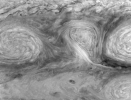
|
-
PIA01231:
-
Dynamics of Jupiter's Long-lived White Ovals

Full Resolution:
|

|
1998-03-06 |
Jupiter
|
Galileo
|
Solid-State Imaging
|
1300x1200x1 |

|
-
PIA01210:
-
Jupiter's Equatorial Region in a Methane Band (Time Set 4)
Full Resolution:
TIFF
(406.3 kB)
JPEG
(56 kB)
|

 Planetary Data System
Planetary Data System




















































































































